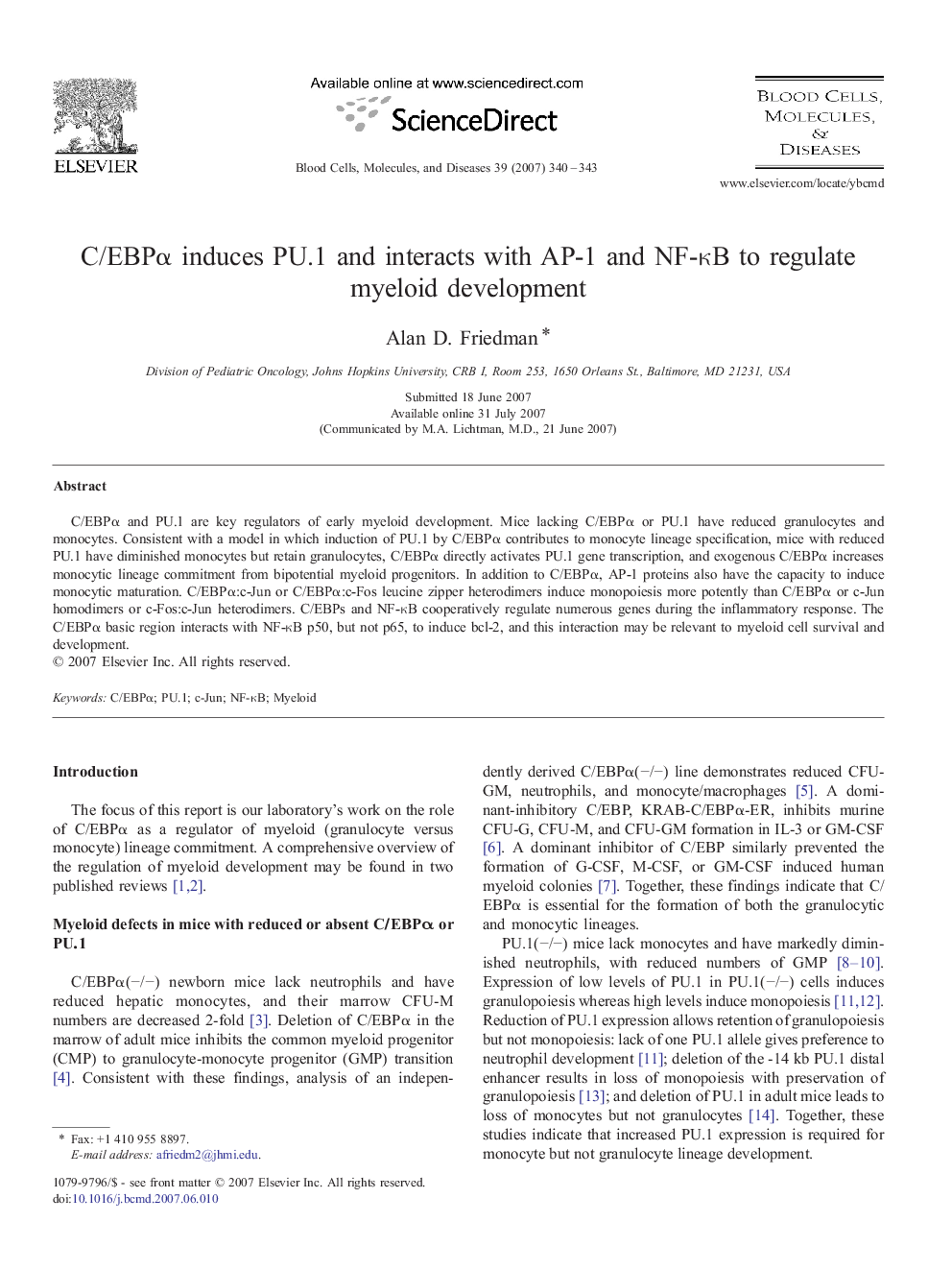| Article ID | Journal | Published Year | Pages | File Type |
|---|---|---|---|---|
| 2827965 | Blood Cells, Molecules, and Diseases | 2007 | 4 Pages |
C/EBPα and PU.1 are key regulators of early myeloid development. Mice lacking C/EBPα or PU.1 have reduced granulocytes and monocytes. Consistent with a model in which induction of PU.1 by C/EBPα contributes to monocyte lineage specification, mice with reduced PU.1 have diminished monocytes but retain granulocytes, C/EBPα directly activates PU.1 gene transcription, and exogenous C/EBPα increases monocytic lineage commitment from bipotential myeloid progenitors. In addition to C/EBPα, AP-1 proteins also have the capacity to induce monocytic maturation. C/EBPα:c-Jun or C/EBPα:c-Fos leucine zipper heterodimers induce monopoiesis more potently than C/EBPα or c-Jun homodimers or c-Fos:c-Jun heterodimers. C/EBPs and NF-κB cooperatively regulate numerous genes during the inflammatory response. The C/EBPα basic region interacts with NF-κB p50, but not p65, to induce bcl-2, and this interaction may be relevant to myeloid cell survival and development.
